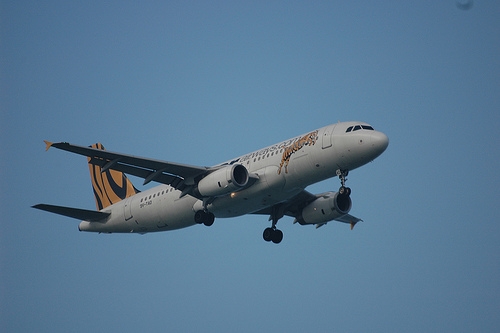
Tiger Australia fails to get its roar back
Net loss narrows to S$14m as Singapore operations post an operating profit of S$4m after 3 quarters of losses.
Tiger Airways reported S$14m in net loss for the quarter. Revenue was up 1% y-o-y and 13% q-o-q to S$181m.
According to DBS, the sequential improvement was driven by a 3ppt improvement in overall load factor to 83.3%, and 7% increase in capacity. Both yield (RPKM) and operating cost per ASK (CASK) remained largely flat q-o-q. "We expect to see the impact of lower fuel prices only in 2QFY13," it said noting though that the carier finds some relief from Singapore operations.
Here's from DBS:
Tiger Australia’s operating losses was largely stagnant at S$21m (vs. S$23m in 4Q12) though load factors improved from 74% in April to 82% by June. However, the main bright spot was Tiger Singapore’s
operations, which turned around and reported S$4m in operating profit, compared to S$6.7m operating loss in 4Q12.
As we had highlighted earlier, demand has finally caught up with the significant capacity expansion in Singapore last year, pushing average load factor up to 85% in the quarter.
Tiger Australia will be ramping up services by October 2012 to pre-grounding scale. With the launch of its Sydney base on 1 July 2012, progressive redeployment of aircraft to Sydney will enable higher utilisation
of the fleet, and reduce operating costs per ASK. In addition to starting the Sydney-Gold Coast service, Tiger Australia will be launching Sydney-Brisbane and Melbourne-Hobart services in the coming months. With Indonesian associate Mandala Airlines continuing to expand, and investment in Philippine carrier SEAir on track to be finalised by 2QFY13, Singapore operations will not need to absorb much excess capacity, and should be able to maintain high load factors and profitability.
























 Advertise
Advertise






